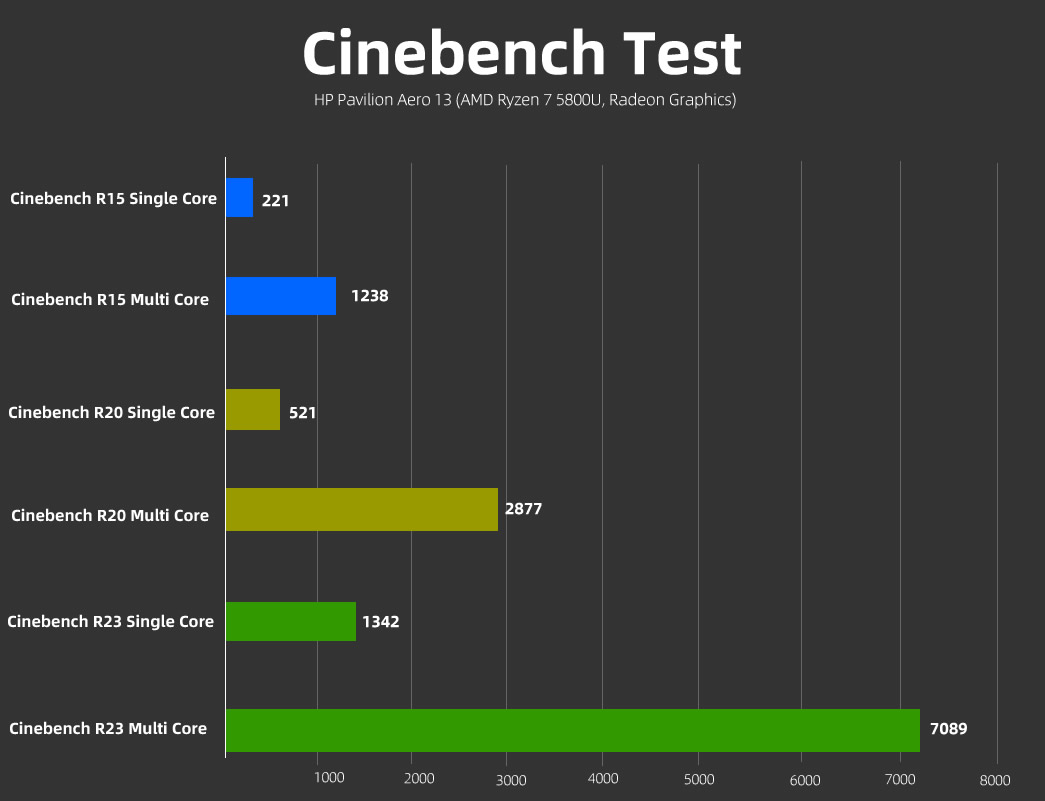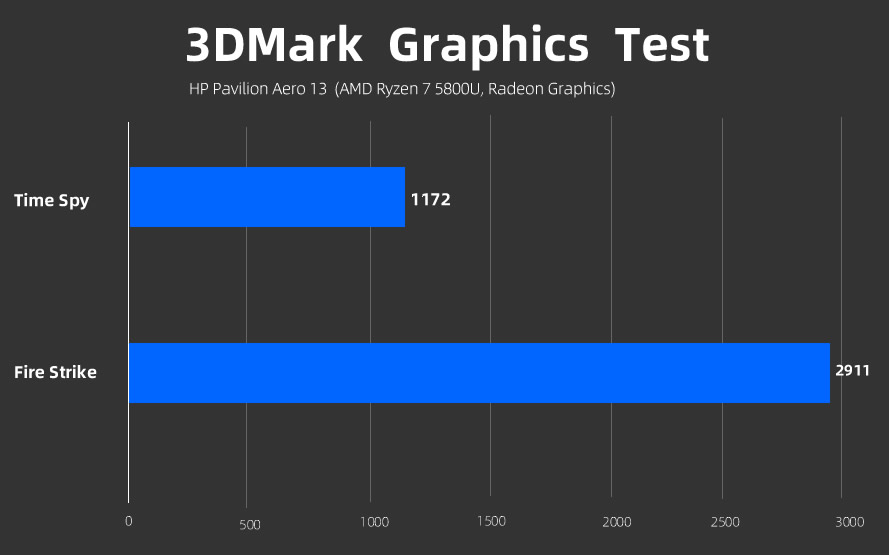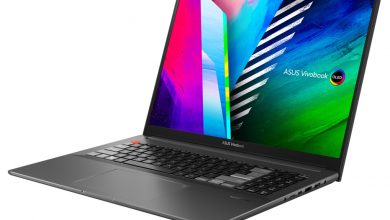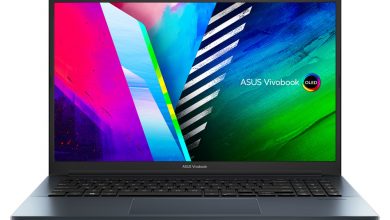At the end of June 2021, HP launched the Pavilion Aero 13. This notebook comes in two variants: the first comes with an AMD Ryzen 5 series processor. The second comes with a Ryzen 7 series processor. The models we’re reviewing today are high-end variants.
The new HP Pavilion Aero 13 has many competitors from different laptop manufacturers, including Dell, Lenovo, ASUS, and even brands like Huawei and Xiaomi, which primarily focus on the smartphone industry. The company has also launched some models with the same characteristics as its other series. The HP ProBook 635 Aero G8 is an example of this. However, when it comes to lightweight design, the new Pavilion Aero 13 has made significant breakthroughs, as it weighs only 960g, making it one of the lightest laptops in the world. Currently, there are few options for this weight, and they have already cost more than $1000.
The new Aero 13 belongs to HP’s Pavilion series, which is known for its speed, portability, and reasonable price. The HP Pavilion series covers a wide range of user needs, including students and people who travel and work on the go. It’s worth noting that the Pavilion Aero 13 has a starting retail price of $749.
HP Pavilion Aero 13 Specifications
| Screen | 13.3″ Diagonal micro-edge IPS Anti-Glare Display, WUXGA resolution (1920×1200), 16:10 aspect ratio, 90% screen-to-body ratio, 400 nits,100% sRGB, and 76% P3-Gamut |
| Processor | AMD Ryzen 7 5800U with Radeon™ Graphics (1.9 GHz base clock, up to 4.4 GHz max boost clock, 16 MB L3 cache, 8 cores) |
| Wireless Connection | Realtek Certified Wi-Fi 6 AX201 (2×2) and Bluetooth 5.2 |
| Graphics card | Integrated AMD Radeon™ Graphics |
| Memory | 16 GB DDR4-3200 SO-DIMM memory (2 DIMMs) |
| Storage | 512 GB PCIe 3.0 NVMe SSD |
| Camera | Integrated HD 720p IR webcam with a dual-microphone array |
| Ports |
|
| Battery | 3-cell 43 WHr Battery |
| OS | Windows 10 Home Basic Edition (64-bit) |
| Weight | 960g (2.1 lb) |
HP Pavilion Aero 13: Design, Appearance, and Portability
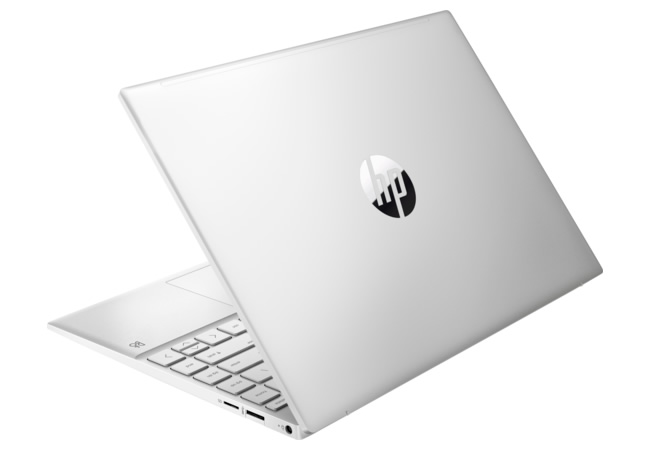
The body of the Pavilion Aero 13 is made of a magnesium-aluminum alloy, which is highly textured, regardless of its appearance or feel. It has been observed that its appearance has not changed much. It still comes in a natural silver finish with a thixotropic coating. The surface of the keyboard is made of 3D one-piece molding, and the rounded corners make it feel more delicate.
The Pavilion Aero 13 dimensions are 297.6 x 209 x 16.9 mm. With a thickness of 16.9 mm and a weight of 960 grams, this notebook excels in portability, which is considered one of the essential factors in business notebooks. It is worth mentioning that it is one of the lightest notebooks available.
HP Pavilion Aero 13: Display
It features a 13.3-inch diagonal IPS micro-edge display with a WUXGA (1920 x 1200) resolution and a 16:10 aspect ratio. The screen-to-body ratio is over 90%, resulting in a more immersive visual experience and narrow bezels. It’s worth mentioning that the display also supports DC Dimming Care for eye protection.
Additionally, our tests revealed that the display has a 99% sRGB color gamut and a 77% DCI-P3 color gamut. The maximum brightness is up to 478 nits with an average △E of 0.75. The high brightness of 400 nits makes it suitable for some design (or construction) jobs, as it is easy to see in bright or outdoor environments. The display performance of the HP Pavilion Aero 13 is impressive.
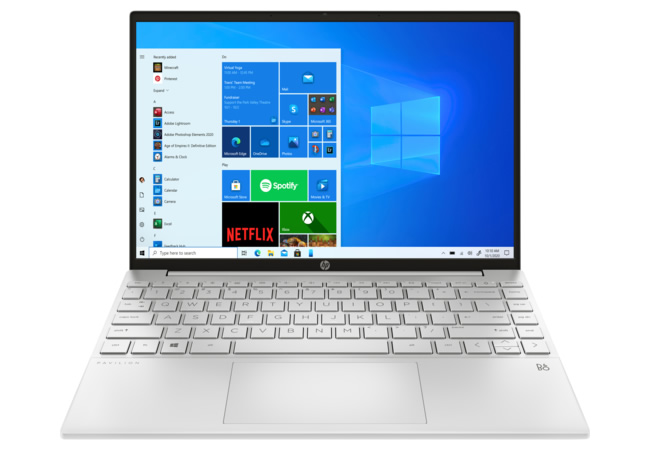
On the top bezel, we see the HP Wide Vision HD (720p) camera with integrated dual-array digital microphones, which also improves the video conferencing experience.
HP Pavilion Aero 13: Keyboard
The Pavilion Aero 13 features a natural silver keyboard. But it is not a full-size keyboard because it still lacks a numeric keypad, which is one of the features of business laptops.

As mentioned earlier, the color of the keyboard also matches the body color, which looks very consistent visually. Under the thin and lightweight body, the keyboard achieves 1.3mm key travel, providing a strong rebound and a good typing feel.
When we switch to a new laptop, it is expected that we will need some time to type smoothly due to the different keyboard layouts between these laptops. However, after switching to the Pavilion Aero 13, there is no longer this feeling due to the keyboard’s excellent space utilization, especially its horizontal utilization, which results in a relatively large keycap area between each key.
The keyboard has two backlights (light and dark) that can be adjusted. In the bottom right corner, the laptop also comes with a fingerprint sensor. It’s worth mentioning that the hinges are made from a tiny slanted heel. The screen can also be adjusted to a specific angle to create a more comfortable typing environment. Overall, the typing experience of the Pavilion Aero 13 is excellent.
HP Pavilion Aero 13: Ports
The Pavilion Aero 13 has a total of 5 ports. On the right side, there is one USB Type-A 3.2 Gen 1 port. The left side has an HDMI 2.0 port, a USB Type-A 3.2 Gen 1 port, a USB Type-C 3.2 Gen 2 port, and a 3.5mm headphone jack.
HP Pavilion Aero13: Battery Life
Battery life is always crucial for business laptops as it is one of the essential features that buyers must check before making a purchase. The Pavilion Aero 13 meets the standard for good battery life among business laptops. The laptop comes with a 3-cell 43Wh lithium-ion polymer battery that offers a long battery life.
To test the battery, we used PCMark 10 (Modern Office Mode) software, and the result was 9 hours and 5 minutes. Wi-Fi is also turned on and connected (during the entire process) with no reduction in screen resolution.
The Pavilion Aero 13 comes with a 45W smart AC power adapter. In addition, the charging port is located on the right side. The battery can be charged to 45% in just 30 minutes via a 50W AC adapter. Once the charge reaches 50% capacity, the charging speed will return to the average speed. Additionally, the charging power can be increased to 65W via the USB Type-C port.
HP Pavilion Aero 13: Memory, Storage, and Wi-Fi
The new Pavilion Aero 13 is only available in one storage variant, with 16GB dual-channel (2x8GB) DDR4 memory at 3200MHz and a 512GB PCIe 3.0 M.2 SSD.
For more information, we used the AIDA64 app and found out that it is a Western Digital SN530 SSD. We also tested the SSD with the CrystalDiskMark application. The SSD has a maximum read speed of 2489 MB/s and a write speed of 1867 MB/s.
The laptop is Realtek Wi-Fi 6 certified and uses a Wi-Fi 6 AX201 (2×2) modem. Additionally, it also supports the latest Bluetooth 5.2. It’s worth mentioning that the Pavilion Aero 13 also supports Gigabit data rates.
HP Pavilion Aero 13: CPU and GPU
The laptop comes with the latest AMD Ryzen 7 5800U processor. The CPU is based on a 7nm manufacturing process and has 8 cores and 16 threads. It has a maximum frequency of 4.4 GHz, 16 MB of L3 cache, and is designed to consume between 15W and 25W. In addition, the CPU is based on the Zen 3 architecture, which brings a significant IPC boost.
The CPU also integrates an AMD Radeon 8 GPU that supports overclocking up to 2000MHz. It has 512MB of RAM, which is acceptable. It also features a 128-bit bus width and 42.7 GB/s of bandwidth.
CPU Testing:
We also benchmarked the Ryzen 7 5800U CPU to check its performance in a business laptop. Here are the benchmarking applications and their results.
CineBench R15: 221cb Single-Core Score and 1238cb Multi-Core Score
CineBench R20: 521cb Single-Core Score and 2877cb Multi-Core Score
CineBench R23: 1342cb Single-Core Score and 7089cb Multi-Core Score
With comprehensive benchmarks, we can say that the Pavilion Aero 13 performs quite well. This laptop is a good choice for office and other related tasks, such as web browsing and document writing. With the multi-core and multi-threaded test results, we can also expect that handling some more complex tasks (such as video editing) won’t be a problem either.
GPU Testing:
After the CPU tests, we also conducted a brief GPU test using 3DMark. Here are the benchmark results.
Fire Strike: 2911 Total Points
Time Spy: 1172 Total Points
As a built-in GPU, we can consider these scores as good scores. This GPU is suitable for some lightweight design and audiovisual entertainment work. It perfectly meets the performance needs of the Pavilion Aero 13 laptop’s target consumers.
HP Pavilion Aero 13: Stress Test and Heat Dissipation
After completing the CPU and GPU tests, it was time to conduct a stress test on the laptop. For this purpose, we used the stability test with the AIDA 64 Extreme application. In 30 minutes, the CPU’s power consumption was 15W, the temperature reached 63°C, and the frequency of all cores was approximately 2.1 GHz to 2.2 GHz.
The Pavilion Aero 13 utilizes a three-phase motor fan with thin blades. The air inlet is located underneath the fuselage, and the air outlet is located at the hinges. The design also improves airflow and helps prevent the CPU from overheating. The temperature was only in the early 60s while running at a total TDP of 15W.
Summarize:
It is not easy to find a laptop that weighs less than 1 kg in the mainstream price range. The Pavilion Aero 13 fills this gap in the market, and on top of that, it also fills in the flaws that can occur in similar laptops (through the highlights mentioned below):
- Magnesium-aluminum alloy with a significant metal texture.
- Excellent keyboard typing experience.
- A sufficient number of ports are available.


